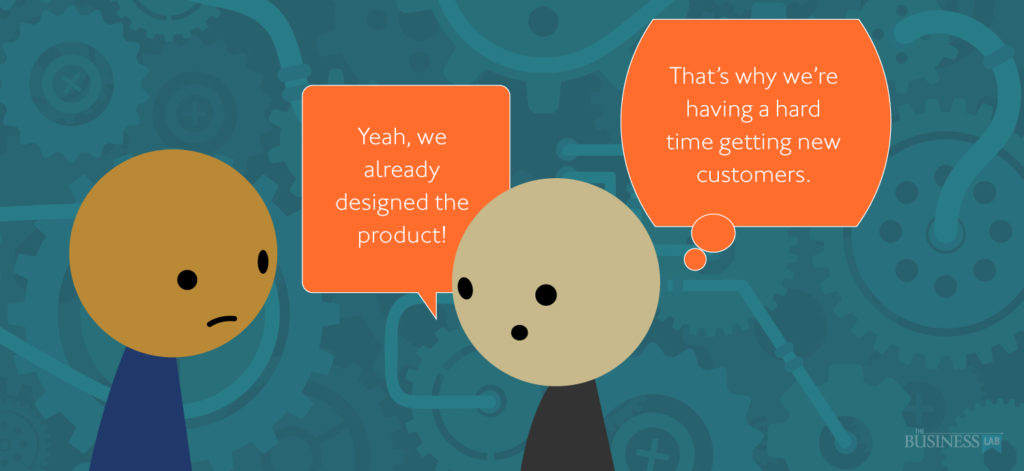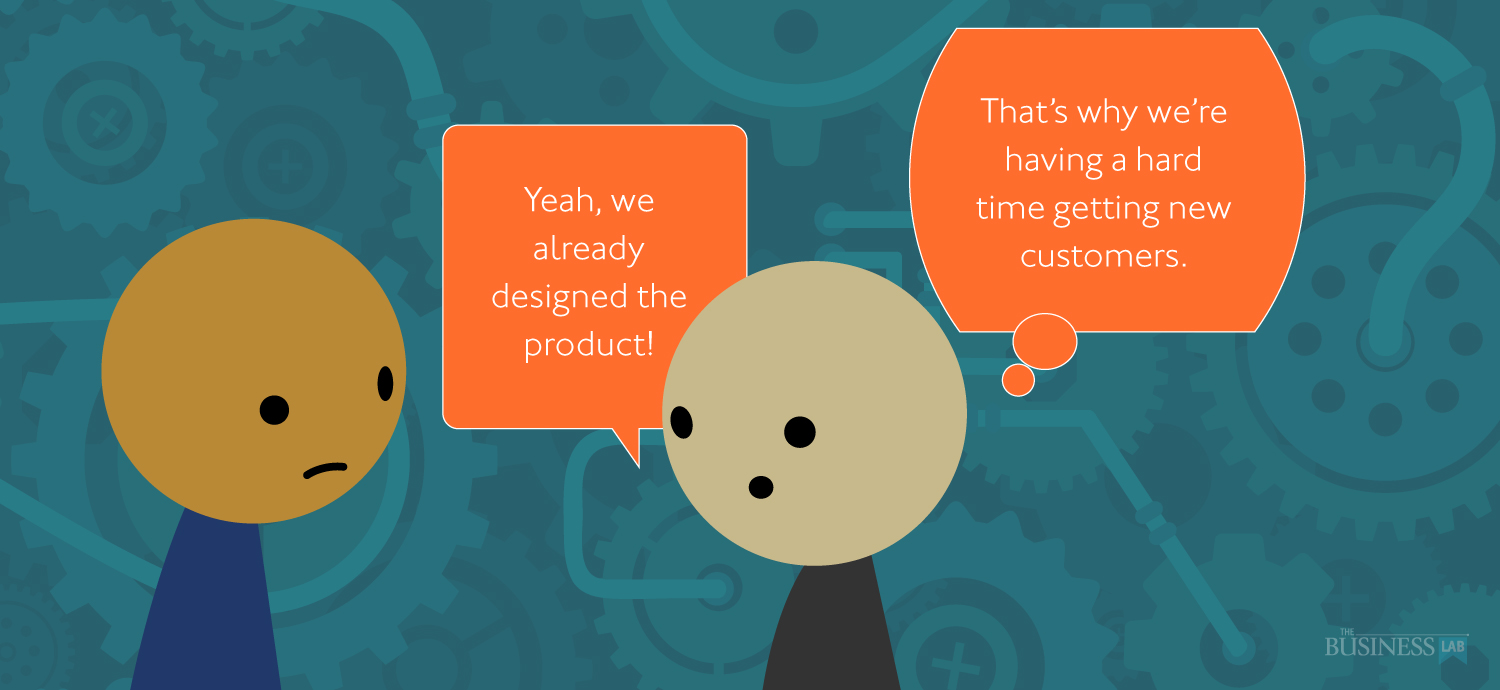
The Story of You and Your Customers
There’s a funny (but entirely accurate) little book out there called Systemantics, The Systems Bible, by John Gall. In the book, he refers to this Theorem:
“If the system says it happened, it happened.”
The net effect of this is to ensure that people in systems are never dealing with the real world that the rest of us have to live in, but instead live within a filtered, distorted, and censored version created from the limited sensory organs of the system itself.
The theorem has two corollaries:
#1 – A system is no better than its sensory organs.
#2 – To those within a system, the outside reality tends to pale and disappear.
It also has a mathematical component (sort of) intended to reveal the amount of information that reaches, or fails to reach, the attention of the relevant decision-makers. It goes like this:
Ro ÷ Rs = The Coefficient of Fiction
Ro is the amount of Reality that fails to reach the decision-makers
Rs is the Total amount of Reality presented to the System
When Ro ÷ Rs is equal or close to zero, there is full awareness of outside reality.
When Ro ÷ Rs is close to one, no reality is getting through.

Positive feedback competes with Reality for input into the System, and the higher the positive feedback, the less Reality getting through.
The larger the System, the worse this gets. It’s critical that companies consistently and continually do reality checks with the outside world (their customers and the customers of those customers) to avoid a high Coefficient of Fiction.
In this respect, COVID may have just given us all the gift of a lifetime… the ability or need to take a step back and check out some assumptions!
What do you genuinely know about your customers? And what, if anything, do you know about their customers?
If you were to direct a documentary called The Day in the Life of My Main Customer, what would it look like? If you were to map out the current reality of your customer, what would that look like?
It’s so easy to see your customer from your perspective. Unfortunately, it usually ends up being some version of: “We make this _____ that does _____ and we sell it to _____.”
But today, products and services are bought, not sold.
As a result, the model is changing and has changed for many companies. Seventy-two percent of B2B influencers are now under the age of 45.
Why does that matter?
Because most people under the age of 45 are astonishingly great at getting the information they want and need without ever talking to anybody. In fact, for many, talking to someone is the last thing they’ll do when making a buying decision. Heck, if your Buyer can purchase any of your products or services directly from your website, be sure that’s an option. Even if the price tag is $100k or more, you’d be surprised at what Buyers are willing to buy before they talk to anyone.
This boils down to the fact that the vast majority of the buying process is complete before anyone is aware there is a buying process.
This means it’s an excellent idea to know exactly what your buyers are looking for. What do they need or expect to see to know you might be an option? Where will they find this information? What proof are they looking for?
A great place to start is by doing an unstructured interview with buyers. When we do these for our clients, we mostly want to speak with buyers who did not buy from our client.
Why?
We learn so much more. Just hearing the words they use, the process they go through, and how the decisions are made is fascinating and invaluable.
Here’s an example. In this example, assume the Company (our client) is a Salesforce Implementor and Integrator. We’ve spoken to five Buyers who did not buy from them.

We gathered the following specific quotes, and we’re going to group them into a category called “Decision Criteria — Details that prove the Company can deliver on the needed benefits.”
Quote One: We’re a relatively small group with limited time to manage this process. We need things spelled out for us – A, B, C. We need to know what we’re responsible for and when and what they’ll be doing along the way.
Quote Two: Our existing systems are not very sophisticated, but we need to make sure our existing data goes over correctly and that we’re able to integrate with our accounting program.
Quote Three: I want continuous but concise insight as to what’s happening with the installation throughout. I don’t like surprises and don’t want to find out at the last minute that we are way off schedule or that more budget is needed to get it done.
Quote Four: I want relevant communication and transparency. I don’t want to have to guess at what’s happening.
From these statements, we can summarize and create a headline. We’ll call this — “The Implementation Process Will Go Smoothly With No Surprises.”
What can we do with this? What proof will we need to offer the Buyer?
How about something like this…
Our No Surprise Guarantee means:
• Project scope is easy to understand and requires 100% agreement by all parties involved.
• Weekly check-in calls – 10 minutes max!
• You’ll always be included in decisions.
• We install fail-safe test & feedback loops throughout.
• You get our 360 Data Migration expertise – which means no info is left behind.
• Our proven process is designed to deliver exactly what you expect, if we fail to deliver you’re covered with our 100% money-back guarantee.
What we like about this…
First off, the promise. A 100% money-back guarantee is powerful and places the burden of delivery squarely on the Company, with no wiggle room. The key is in the project scope – it has to be easy enough for everyone to understand and agree with. This means the Company must do all the work necessary to fully understand the Buyer’s needs and present them in an easily understood way. Second, it addresses the Buyers expectations if they say, “We’re a relatively small group with limited time to manage this process. We need things spelled out for us – A, B, C. We need to know what we’re responsible for and when and what they’ll be doing along the way.”
We would suggest the Company provide an If-Then analysis for areas where there is likely to be confusion or the outcomes are not obviously apparent. Create a visual diagram so that the Buyer can easily see how things are connected, and the consequences if the connection is broken. This will further reduce the risk to your Buyer of not understanding and not getting what they thought they were getting or need, and of the Company not fully understanding what the Buyer needs and is expecting.
Requiring a 100% project scope agreement by all parties places the burden of scope creep directly on the Buyer’s shoulders. Anything outside of the 100% agreed upon scope will need a decision from the Buyer – either they spend more time and money now, or they table it for later.
Weekly check-in calls, the promise that the Buyer will always be included in any decision, and fail-safe test & feedback loops throughout… all work to take away surprises. This speaks directly to both Buyer expectations – “I want continuous but concise insight as to what’s happening with the installation throughout. I don’t like surprises and don’t want to find out at the last minute that we are way off schedule or that more budget is needed to get it done,” …and… “I want relevant communication and transparency. I don’t want to have to guess at what’s happening.”
Promising ‘no data left behind’ with the Company’s 360 Data Migration expertise addresses the Buyer’s expectation when they say “Our existing systems are not very sophisticated, but we need to make sure our existing data goes over correctly and that we’re able to integrate with our accounting program.”
Suppose the Company is confident enough in its ability to produce the right scope document and is disciplined enough to follow the protocol outlined (calls, decision making, testing & feedback). In that case, a 100% money-back guarantee is very realistic, and most competitors will be unable to match this offer – at least not in the short term. So it’s a real competitive advantage.
With all the information you get from your Buyers (especially those who did not buy) you’ll have a powerful way to look at all your communications and even your internal policies.
You will quickly see the gaps and will also have the solution to fill those gaps. Literally, the Buyer will tell you exactly how they want you to approach them, what to say, and where to say it.
To see if you really need to do this, go ask everyone in your Company “What do we do for our customers?”
If you hear a lot of answers that follow the formula “We make this _____ that does _____ and we sell it to _____” then you know you need to go find some Buyers to talk to. Preferably Buyers who did NOT buy from you.
Or hire a company to create a documentary for you. **smile**
Thanks for reading this!
Your happy, dedicated, results-driven friends at The Business Lab.

